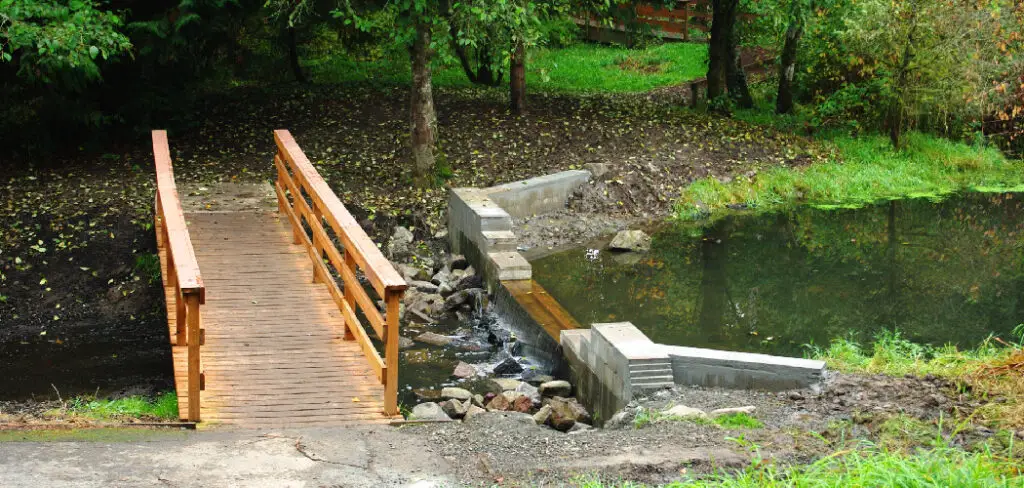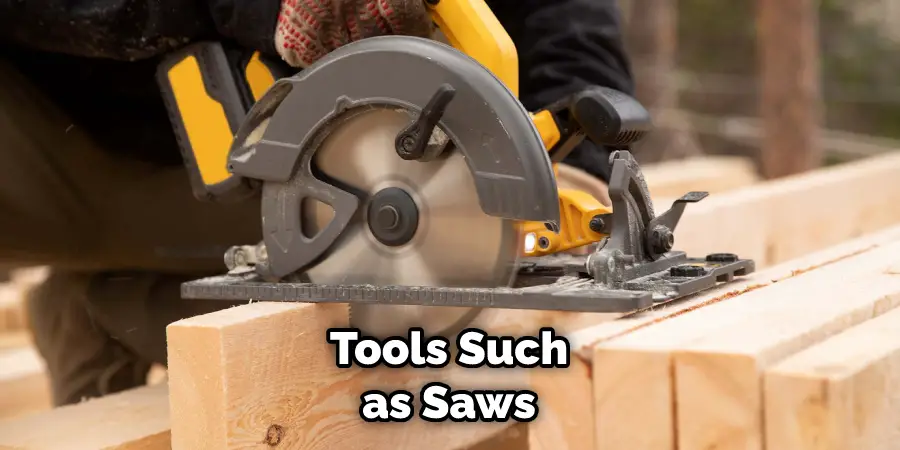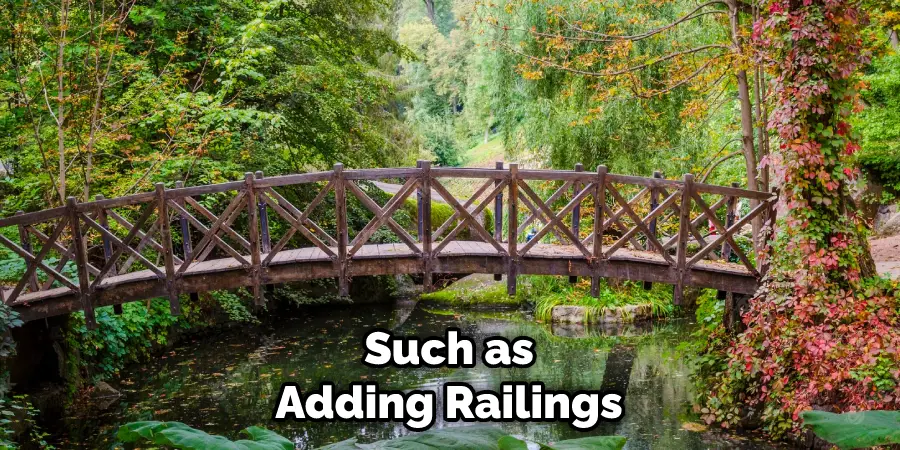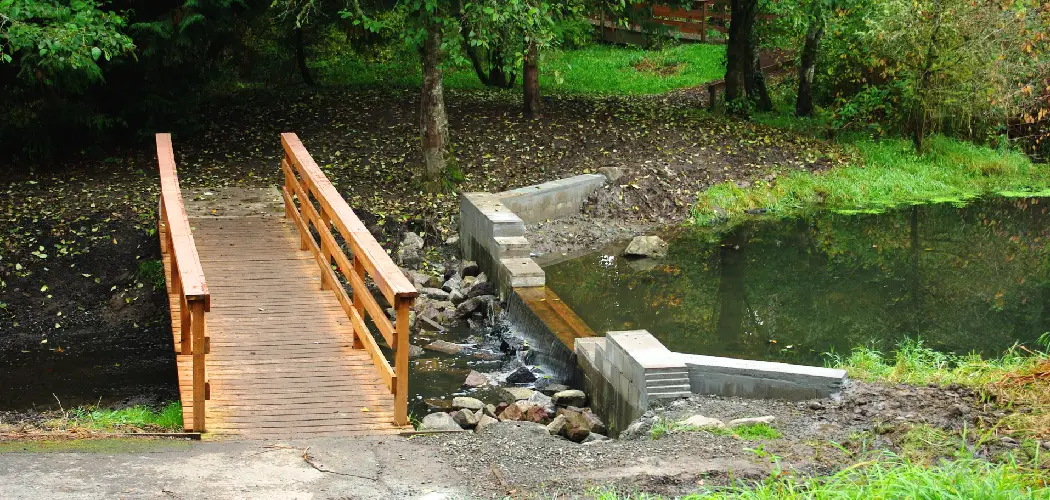Are you looking for a way to cross a small creek without getting wet? Building your own bridge over a small creek is the perfect solution. It can be a fun and practical project that you can do with just minimal materials and only basic knowledge of construction techniques.

This article will give you an overview of how to build a bridge over a small creek safely and effectively, including what materials you need and which construction methods to use.
Building a bridge over a small creek may seem like an intimidating task, but it’s actually fairly simple when following the right steps! With some basic carpentry skills and the right materials and tools, anyone can construct a safe, sturdy bridge to span a small stand. This guide will step through each aspect of building your bridge from start to finish. So let’s get started!
Why is It Important to Build a Bridge Over a Small Creek?
1. To Prevent Erosion
A bridge over a creek can help to prevent the banks, or shoreline, from eroding. As water passes under the bridge, it’s slowed down and instead of being able to scour away soil particles, the force of the water is reduced.
2. Accessibility
Bridges over creeks provide a safe way to cross the water, which is especially important in rural areas where people may need to cross the creek to get from one side of their property or another. They also provide accessibility for recreational activities such as fishing, hiking and camping.
3. Aesthetic Appeal
Bridges over creeks can add a touch of beauty to a landscape. Whether it’s a simple wood plank bridge or an elaborate stone archway, bridges can create focal points that attract the eye and make an area more visually appealing.
How to Build a Bridge Over a Small Creek in 5 Easy Steps
Step 1: Gather All The Materials

The very first step is to gather all the materials you will need. This includes wood, nails, screws and tools such as saws, drills and hammers.
Step 2: Measure Twice
Before doing anything else it is important to measure twice and make sure that the bridge will fit over the creek properly. You don’t want it to be too short or too long.
Step 3: Build the Base
The base of your bridge must be strong and secure, so use a solid piece of wood to create it. Make sure that you fasten it firmly with nails and screws. Also make sure to use proper support beams on either side.
Step 4: Build the Deck
Once the base is built, it’s time to build the deck of your bridge. This should be slightly longer than the width of your creek so that there is some overhang on either side for safety. Fasten this securely with nails and screws as well.
Step 5: Finishing Touches
The last step is to give your bridge a few finishing touches, such as adding railings if desired. You may also want to add a coat of paint or sealant to protect the wood from weathering and rot.

Once all these steps are completed, you have successfully built your bridge over a small creek.
Some Additional Tips to Build a Bridge Over a Small Creek
Now that you understand why it is important to build a bridge over a small creek, let’s look at how to do it. Building a bridge across a creek requires careful planning and preparation to ensure that it is safe and sturdy enough to support the weight of anyone crossing over. Here are some tips for building a bridge over a creek:
1. Choose the Right Bridge Design
When choosing a bridge design, you should consider how much weight it needs to support, as well as any possible obstructions such as rocks in the water or steep embankments.
The most common bridge designs are beam bridges and truss bridges, but depending on the specifics of your situation, you may need to consider other options such as arch or suspension bridges.
2. Do Not Forget Flexibility
It is important to factor in flexibility when designing and building a bridge. This will help prevent the structure from becoming too rigid, which could result in it being damaged by strong currents or flooding waters.
3. Build with Durable Materials

The materials you use to build your bridge should be able to withstand both weight and weather. Steel and concrete are the most common materials used, but if you have a small creek, wood may be an option as well.
4. Consider Your Foundation
The foundation of your bridge is just as important as its design. You need to make sure that it can withstand the weight of vehicles or people crossing over the bridge, and you should also consider any potential soil erosion or flooding that may occur.
5. Inspect Regularly
When the bridge is complete, it’s important to inspect it regularly and make sure that it is safe and structurally sound. This will help prevent any accidents or damages caused by a faulty structure.
By following these tips, you can build a bridge over a small creek that will be safe and stable for many years to come. With careful planning and preparation, you can create a bridge that is both functional and aesthetically pleasing. Good luck!
Frequently Asked Questions
What Precautions Should I Consider Before Building a Bridge Over a Small Creek?
Before beginning the process of building a bridge over a small creek, it is essential to consider safety precautions and environmental regulations. It is important to ensure that there are no restrictions on the location or size of the bridge due to local laws and codes, as well as any potential threats from flooding, erosion, or landslides.
Additionally, it is necessary to determine the material and design of the bridge in order to best meet the needs of both people and wildlife that may frequent the area.
What Materials Are Best Suited for Building a Bridge Over a Small Creek?
The material used to build a bridge over a small creek should be appropriate for the environment and climate in which it will be built. Steel, concrete, and timber are all viable options, but each has its pros and cons. Steel is strong yet lightweight and can easily be shaped to fit the needs of the bridge.
Concrete is also durable and cost-effective but is heavier than steel and may require more maintenance. Timber is an economical and organic option, but requires special protective measures to prevent weather damage and rot.
What Considerations Should I Keep in Mind When Designing the Bridge?
The design of the bridge should reflect the environment in which it will be built. The bridge should be stable and safe for pedestrians or vehicles that may cross over it, as well as any wildlife that may be using the creek. Additionally, the design should factor in potential hazards from flooding or other natural disasters, and appropriate protection measures should be taken to ensure the bridge will remain intact despite such events.
Finally, it is important to consider the aesthetic value of the bridge; an attractive and well-designed structure will add both visual appeal and value to the area. Building a bridge over a small creek can be a rewarding experience, but it is essential to keep safety, environmental regulations, and aesthetic appeal in mind throughout the process.
By taking these considerations into account when planning and constructing the bridge, you will ensure that it will be both structurally sound and visually appealing.
How Much Does It Cost to Build a Bridge Over a Small Creek?
The cost of building a bridge over a small creek will vary depending on the materials used and the size of the bridge. Generally speaking, steel or concrete bridges tend to be more expensive than timber bridges, as they require additional labor for shaping and assembly.

Additionally, larger bridges may require special equipment and more materials, resulting in a higher cost. On average, a bridge over a small creek can cost anywhere from $2,000 to $20,000. Ultimately, the exact cost will depend on the size and design of the bridge as well as any additional features or protection measures that may be necessary.
Conclusion
Now you know how to build a bridge over a small creek. With the right materials and tools, you can create a structure that will last for many years. Use the information in this article to help you design the optimal bridge for your specific needs.
Be sure to check with local building codes and regulations before starting construction. Additionally, always remember safety first when working with any type of project involving large objects or potentially hazardous materials.
In addition to following the steps in this guide, there are several other things to keep in mind when building a bridge over a small creek. First, consider the width and length of the bridge and make sure you have enough materials for it.
Second, make sure to research what type of soil is present in the area and use the appropriate structural materials for your construction. Finally, consult an expert if you are feeling unsure about any aspect of building a bridge. With the right preparation and resources, you can build a safe and durable bridge over a small creek that will last for years to come.
About
Outdoor Fixes is a distinguished figure in the world of Diy design, with a decade of expertise creating innovative and sustainable Diy solutions.
His professional focus lies in merging traditional craftsmanship with modern manufacturing techniques,
fostering designs that are both practical and environmentally conscious. As the author of diy,
outdoorfixes delves into the art and science of outdoorfixes-making, inspiring artisans and industry professionals alike.
Education RMIT University
(Melbourne, Australia) Associate Degree in Design (Outdoor Fixes) Focus on sustainable design, industry-driven projects,
and practical craftsmanship. Gained hands-on experience with traditional and digital manufacturing tools, such as CAD and CNC software.
Nottingham Trent University
(United Kingdom) Bachelor’s in outdoorfixes.com and Product Design (Honors) Specialized in product design with a focus on blending creativity with production
techniques. Participated in industry projects, working with companies like John Lewis and Vitsoe to gain real-world insights.
Publications and Impact
In diy, Outdoor Fixes his insights on indoor design processes, materials, and strategies for efficient production.
His writing bridges the gap between artisan knowledge and modern industry needs, making it a must-read for both budding designers and seasoned professionals.

